Smart garage flooring choices span far beyond bare concrete. Today’s homeowners can pick coatings, tiles, mats, and even heated slabs that defend against hot-tire pickup, oil stains, and winter slush while adding color and comfort. From hard-shell epoxies to cushy recycled-rubber squares, each option balances durability, cost, and installation effort differently — so the best surface depends on how you actually use the space. The twenty ideas below break down practical benefits and trade-offs, giving you clear, actionable ways to turn any garage floor into a tougher, cleaner, and better-looking work zone. Let’s explore what works.
1. Epoxy Garage Flooring for a Hard-Shell Finish
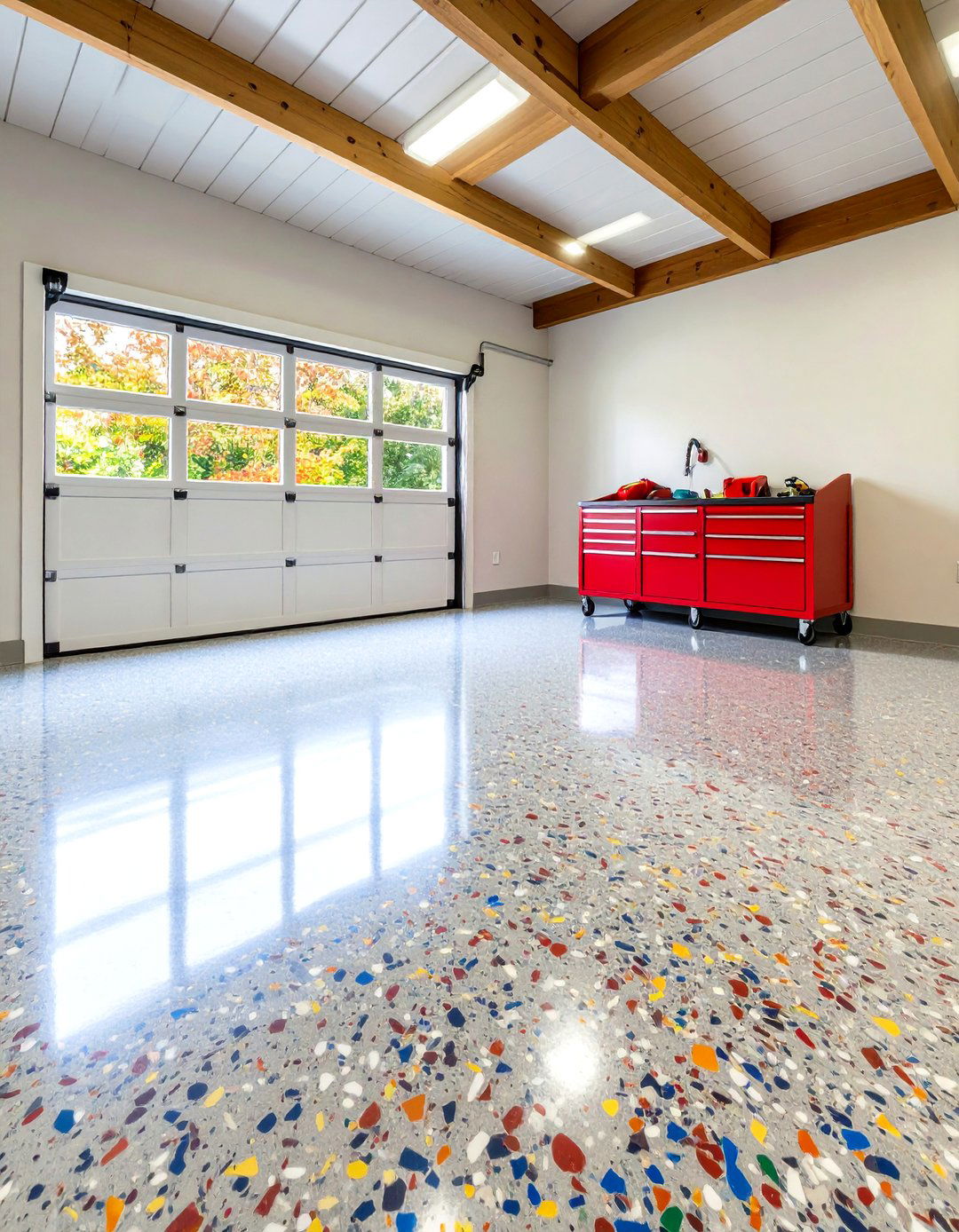
A gleaming epoxy coating bonds to concrete and forms a chemical-resistant shell that shrugs off oil, salt, and hot-tire marks, making garage flooring feel as tough as an auto showroom. Adding color flakes further camouflages dirt and minor scratches while letting you customize patterns to match tool chests or team colors. Although DIY kits exist, proper acid etching or grinding is critical; rushed prep leads to peeling. Budget about two to three days for cleaning, patching, coating, and full cure. Once finished, simple hose rinsing keeps the surface looking new, and many owners report cleaning more often simply because the floor looks too good to ignore.
2. Polyaspartic Garage Flooring for One-Day Turnaround
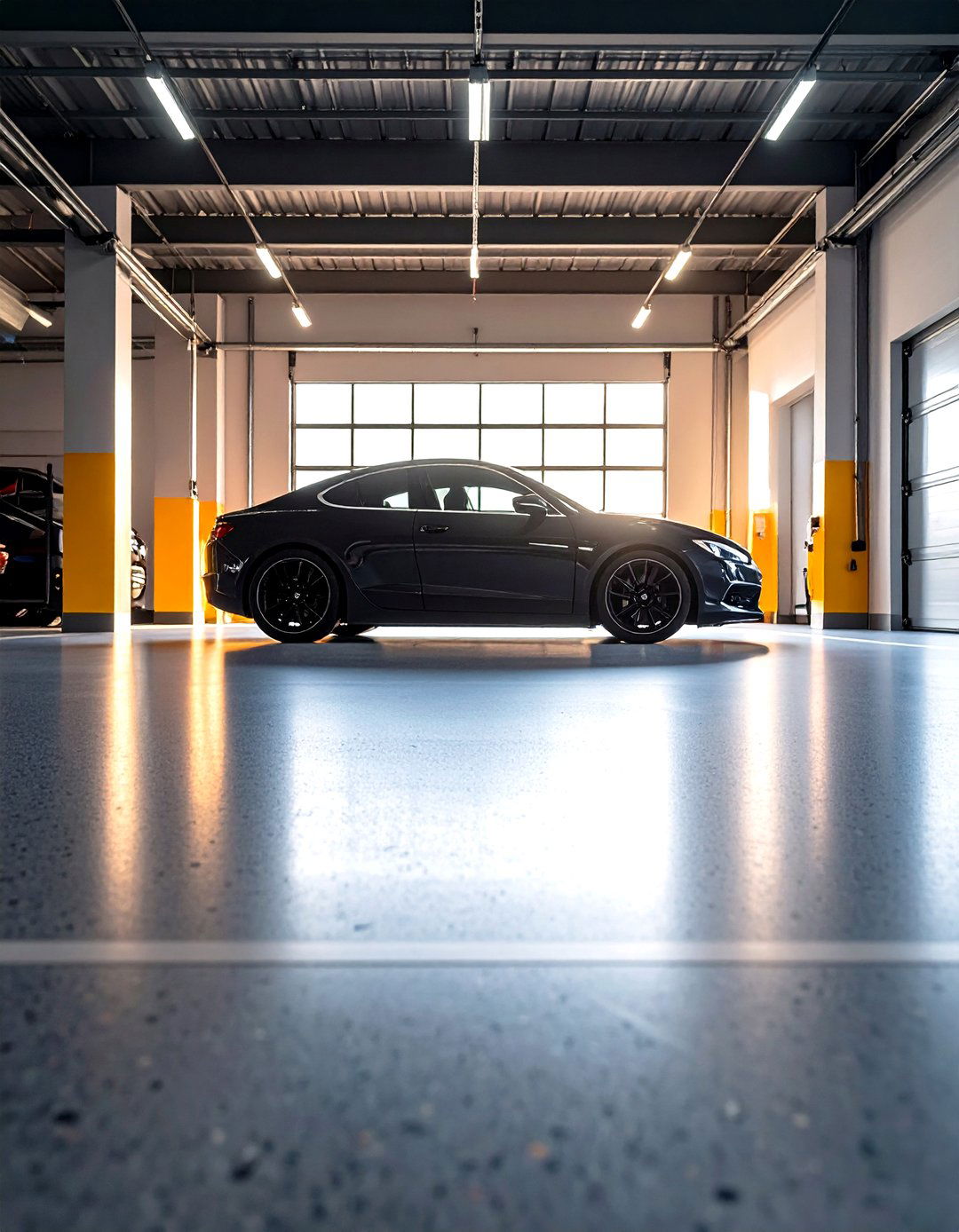
Unlike traditional epoxies, polyaspartic (also sold as polyurea) cures in hours, so most installations wrap in a single day, meaning you can park by evening. This fast-setting chemistry resists UV yellowing, abrasion, and chemicals better than many epoxies, making it ideal for sunny climates or heavy workshops. Slower pot life versions give DIYers workable time, while pros finish in two coats with broadcast chips for texture. Though pricier per square foot, the rapid return-to-service, low odor, and long warranty often justify the splurge if you can’t leave cars outside for long.
3. Interlocking PVC Tiles for Modular Style
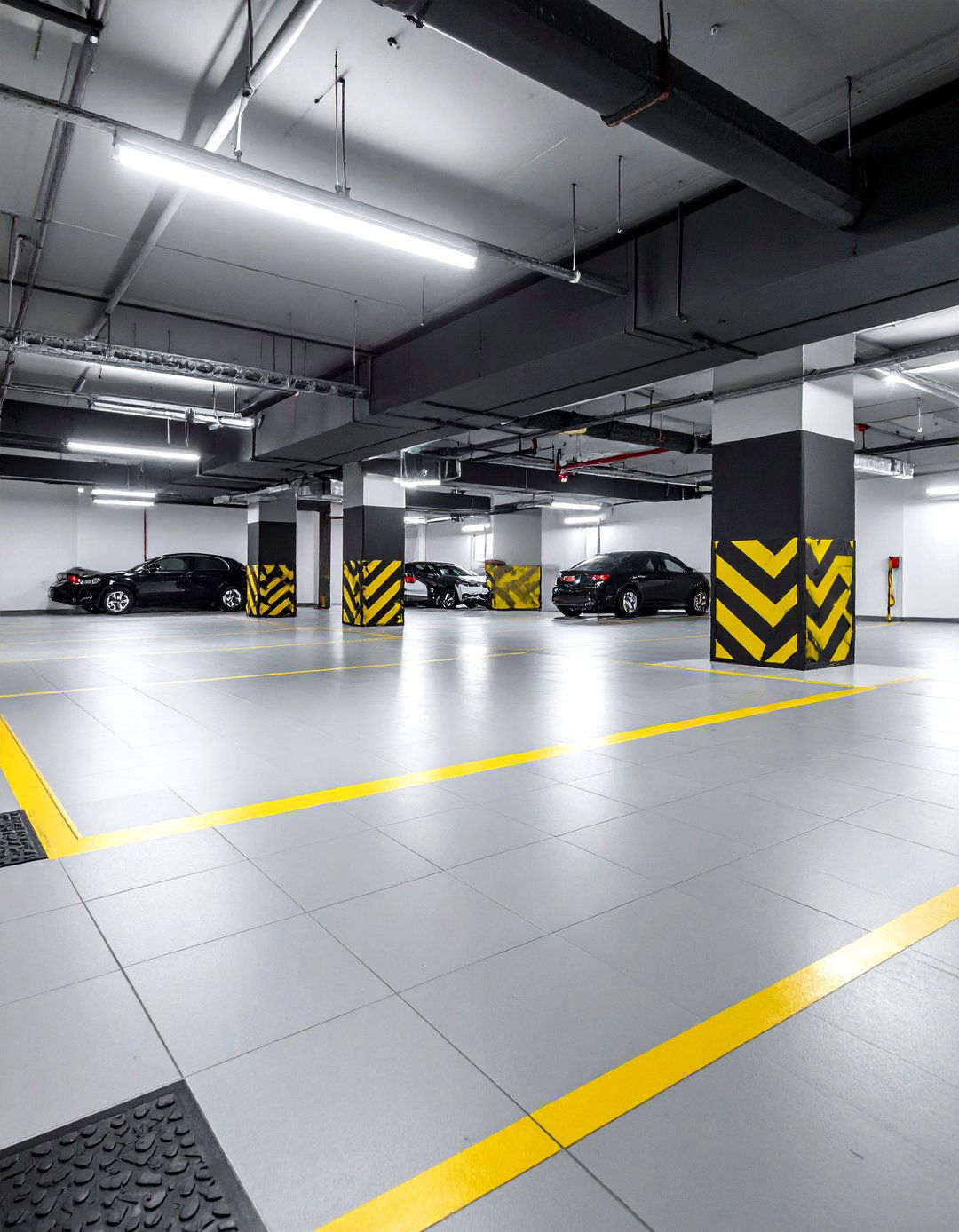
Snap-together PVC or polypropylene tiles click into place with a mallet, letting you cover an entire garage floor in an afternoon with zero adhesives. Many feature hidden channels underneath to vent moisture, and damaged pieces lift out individually for replacement. Choose solid tops for a seamless look or coin and diamond treads for extra grip. While tiles can telegraph concrete humps, a simple self-leveler fixes most issues. Colors mix like Lego bricks, so you can outline parking bays or racing-flag borders that make the space pop without permanent commitment.
4. Rubber Roll-Out Garage Flooring for Cushioned Comfort
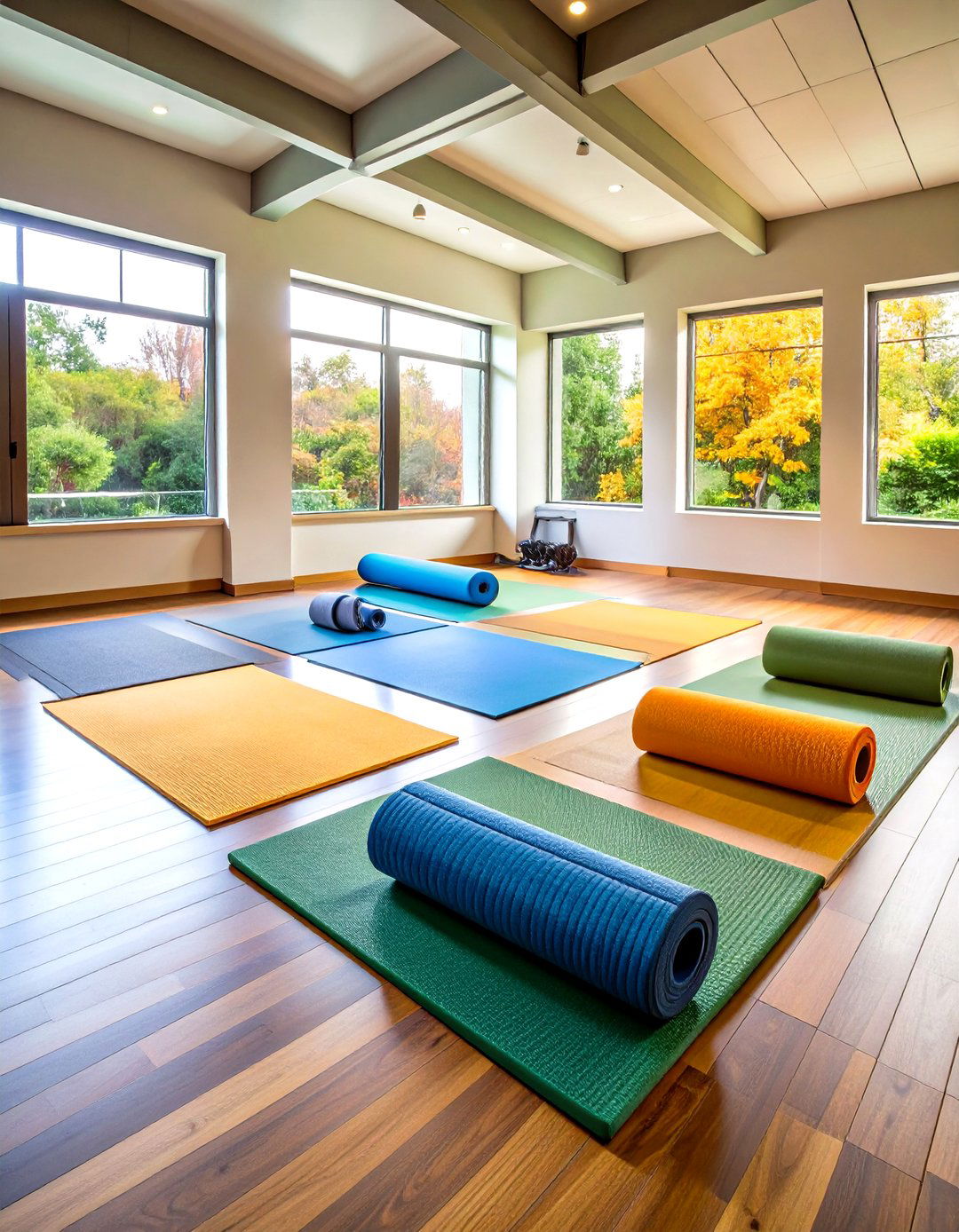
Rubber rolls unroll over concrete like a giant yoga mat, instantly giving garage flooring a forgiving feel that protects dropped tools and quiets compressor noise. The material’s shock absorption and traction make it popular for combo gym-garage spaces and woodworking shops. Recycled-content versions add eco points, though raw rubber can darken under motor-oil drips, so place drip trays beneath vehicles. Installers cut rolls with a utility knife and tape seams; if you move, simply roll them back up. Occasional mopping with mild detergent keeps the surface fresh.
5. Polished Concrete Garage Floors for Low-Maintenance Shine
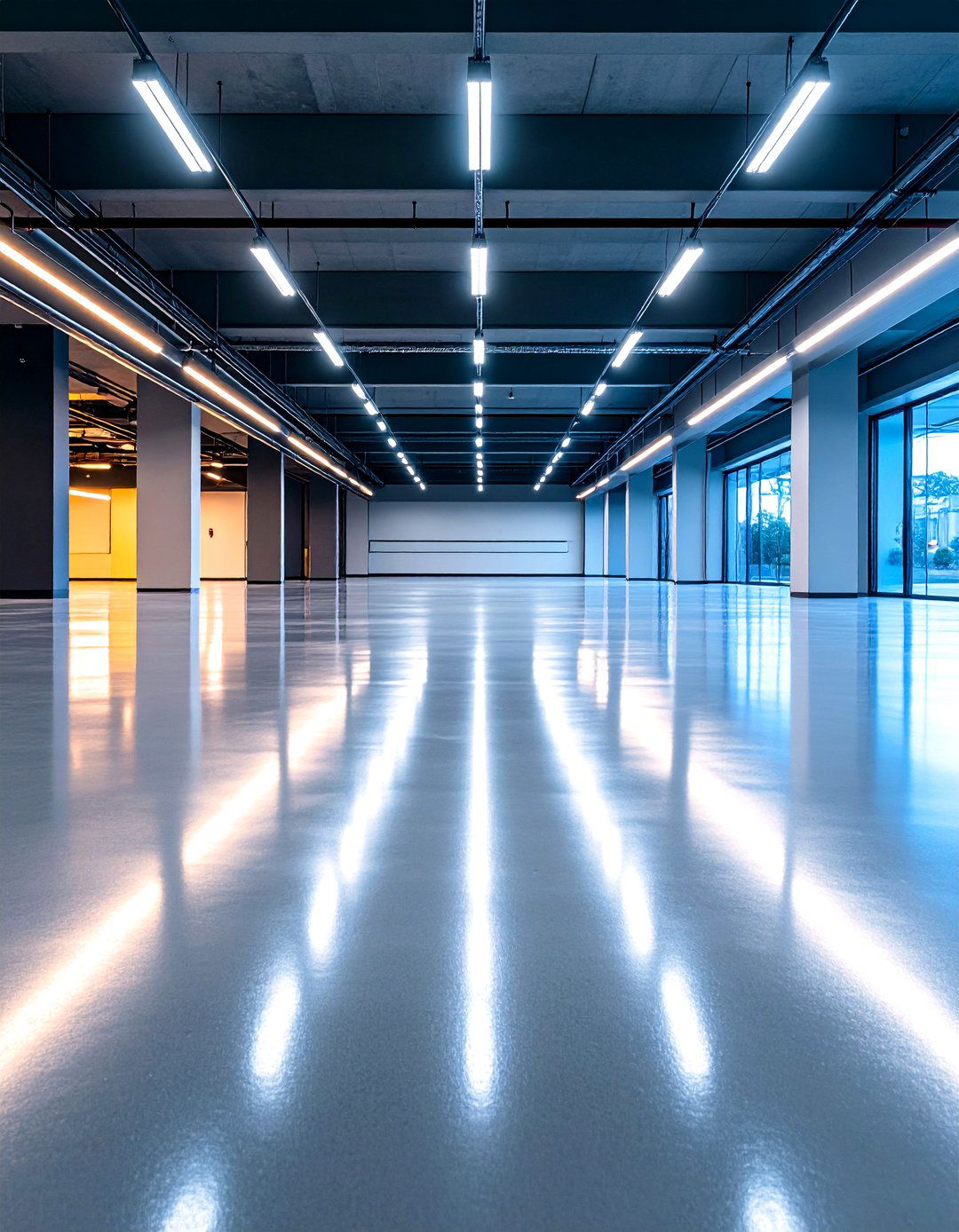
Grinding and densifying an existing slab polishes garage flooring until it reflects light like stone, eliminating dusting and making sweeping effortless. A lithium silicate hardener penetrates the concrete, boosting abrasion resistance without adding a topical film that can chip. Pair the finished surface with under-slab radiant heat for a workshop that stays comfortable all winter. Yearly burnishing or spray buffing refreshes gloss, and neutral-pH cleaners prevent hazing. Upfront cost rivals quality coatings, yet the finish can last decades because nothing sits on top to fail.
6. Stained Concrete Garage Flooring for Custom Color
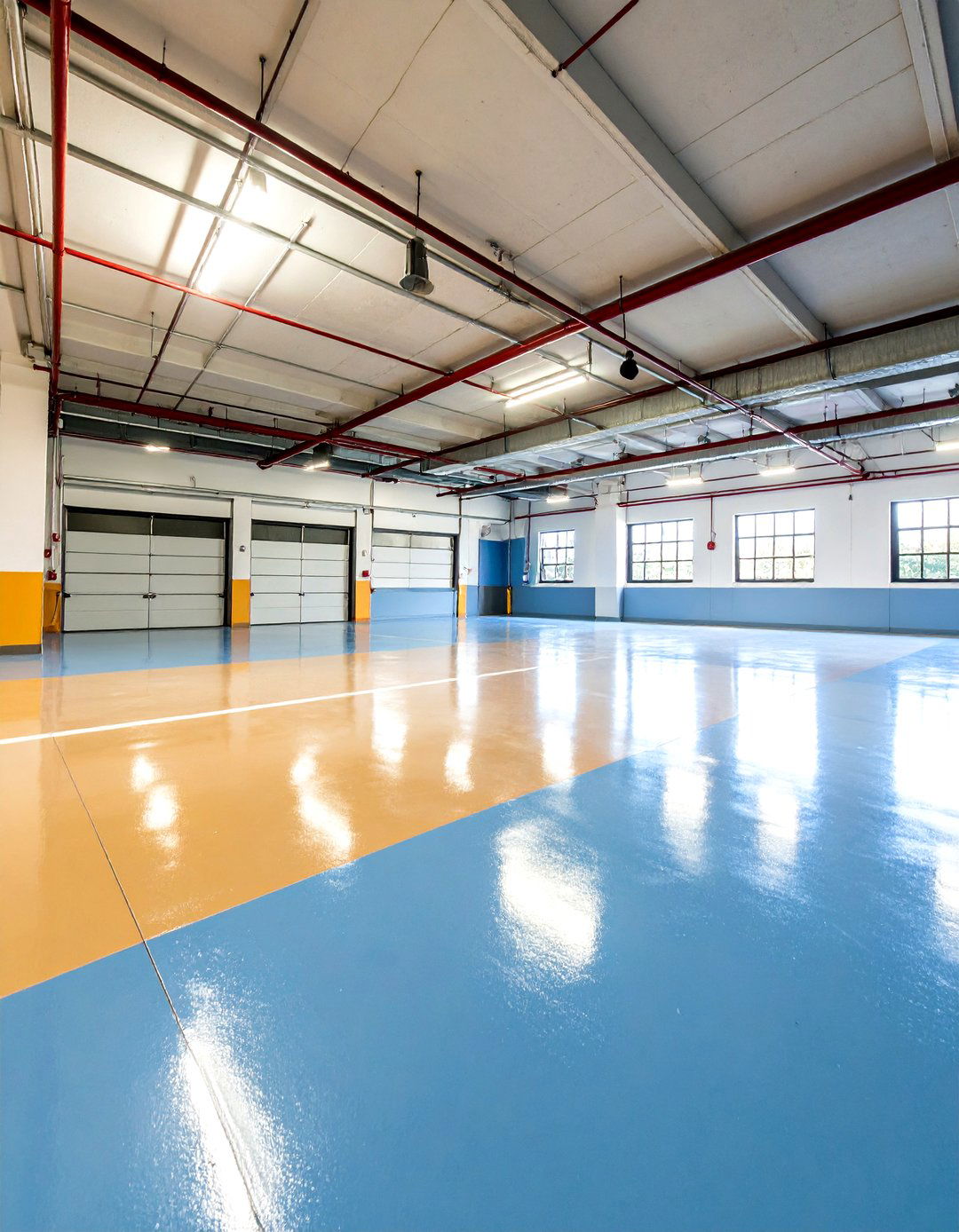
Acid or water-based stains soak into concrete and react to minerals, creating variegated blues, ambers, or earth tones that mimic natural stone for fraction of the price. Because color becomes part of the slab, minor scratches remain invisible, and UV rays won’t fade it. Finish with a clear urethane or polyaspartic topcoat for chemical resistance. Preparation demands thorough degreasing and masking, but artistic freedom is huge — brush, sponge, or spray layers for marbled effects. If you tire of the look later, you can still overlay with tiles or new coatings.
7. Luxury Vinyl Garage Flooring for a Residential Feel
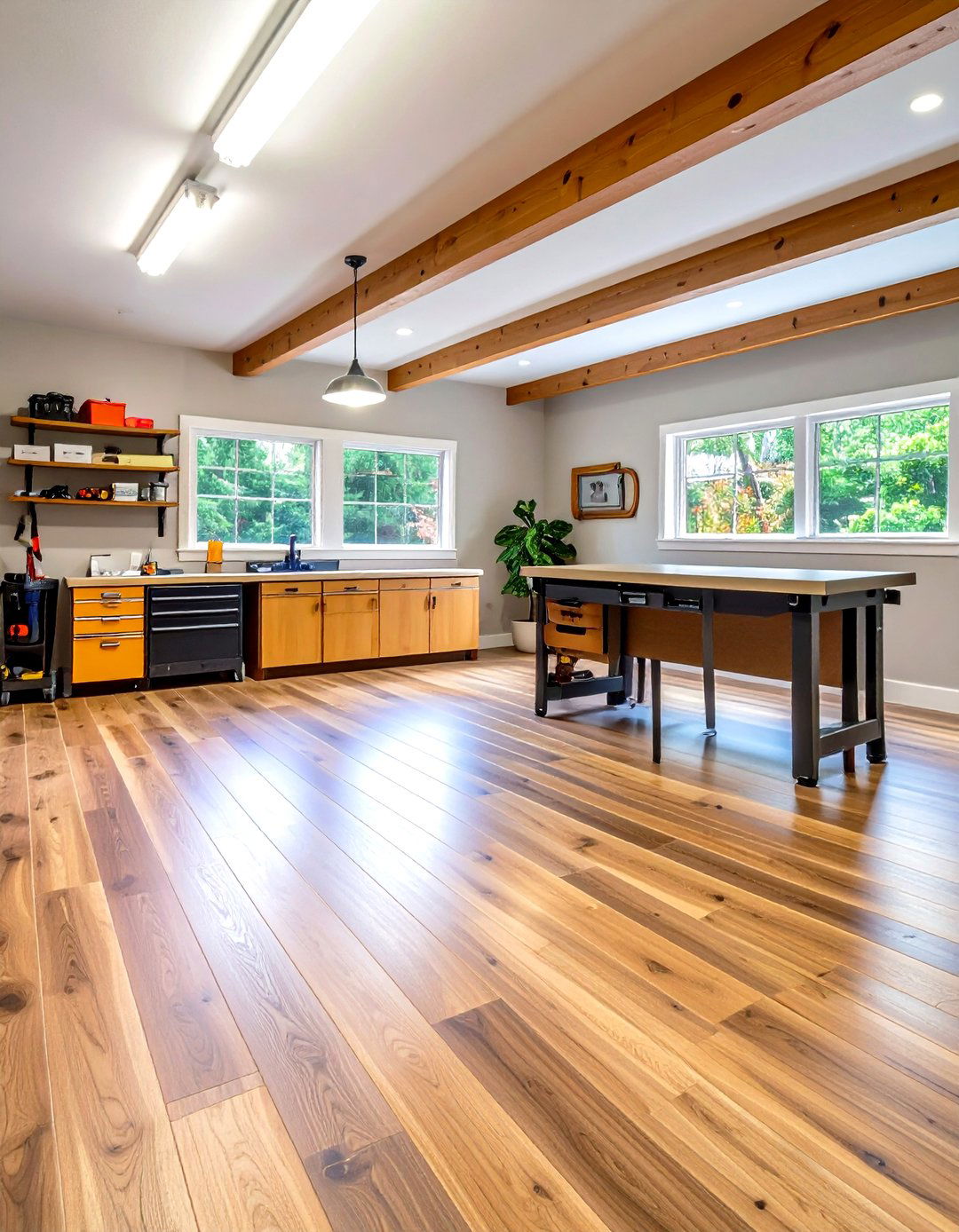
Luxury vinyl tiles (LVT) with rugged wear layers and stone-composite cores offer a warm, wood-plank look yet withstand typical vehicle loads, making garage flooring feel like an upscale bonus room. Floating click-lock systems install over foam underlayment to reduce echo and foot fatigue, while gluedown planks provide maximum stability under rolling tool chests. Expect 15- to 20-year lifespans with basic sweeping and occasional damp mopping. For edge sealing, run a bead of waterproof adhesive at the door to block windblown rain.
8. Porcelain Tile Garage Flooring for Premium Durability
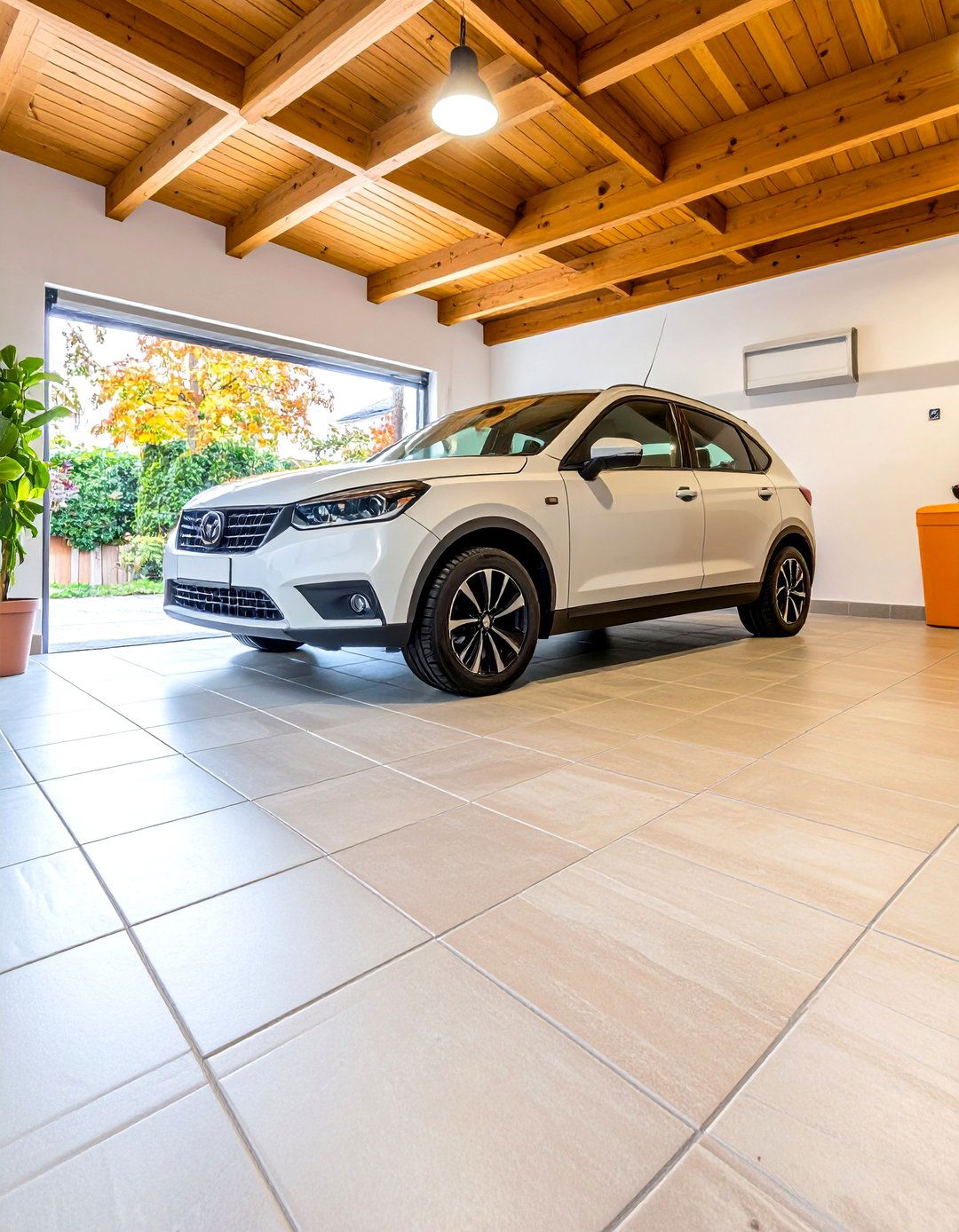
High-density porcelain rated for garages shrugs off road salt, jack stands, and brake-fluid spills while bringing indoor-grade style outside. Opt for matte, R11-rated slip-resistant finishes to avoid skating when wet. Because tiles fire at over 2,200 °F, they resist thermal shock from hot tires better than ceramic. Installation mirrors interior tile work: self-leveling mortar, narrow grout joints, and an epoxy-based grout that resists staining. The result is a showroom-quality surface that cleans with a hose yet feels like a designer mudroom.
9. Carpet Tiles Designed for Garage Flooring Warmth
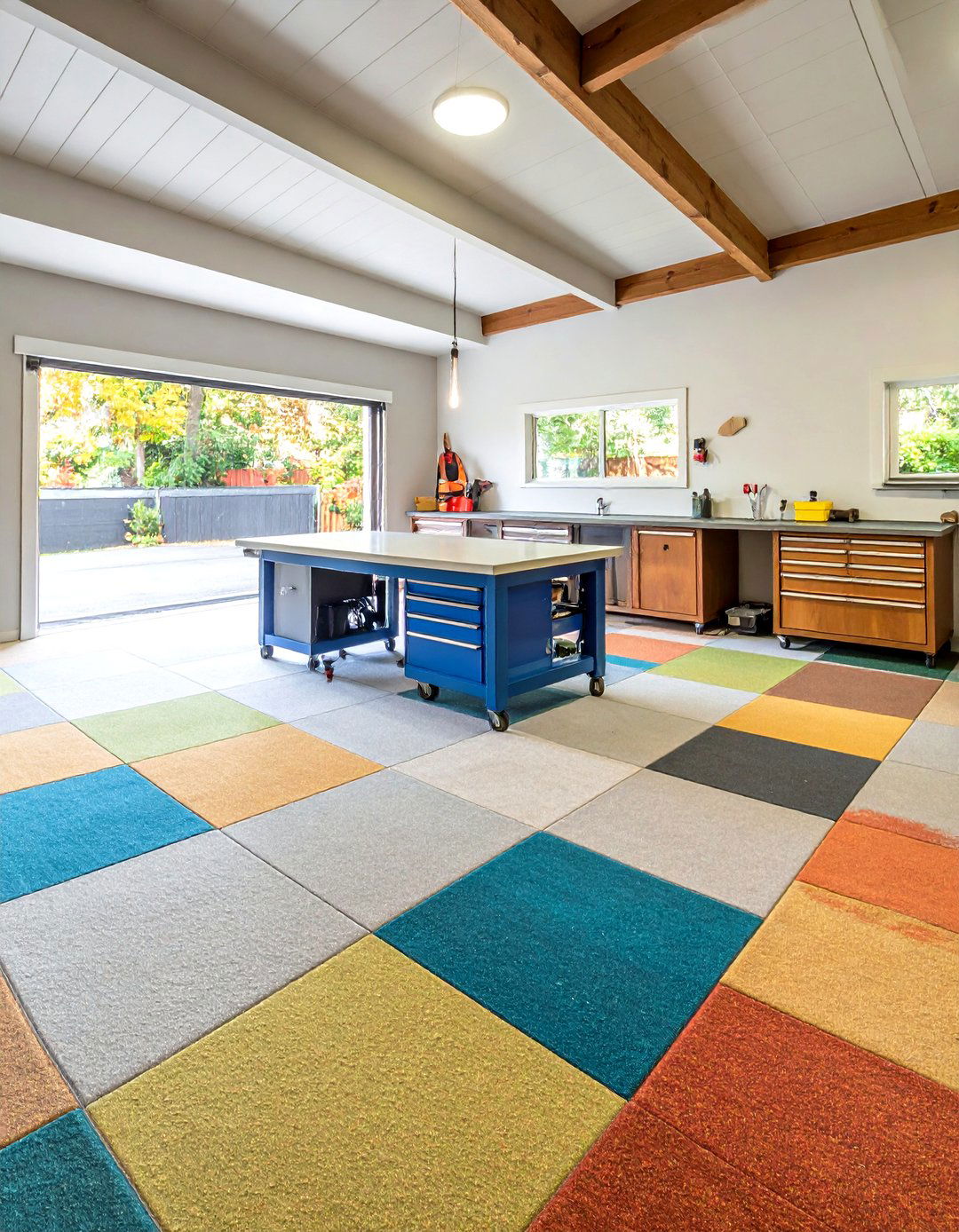
Low-pile, solution-dyed polypropylene carpet tiles rated for garages snap or glue down to banish cold concrete under bare feet. They dry quickly after a wash-down and won’t unravel if you cut around posts. Oil stains may darken fibers, so place absorbent pads under drip-prone engines, but tiles pop out for spot replacement. Many people combine carpet squares under workbenches with harder flooring beneath cars, creating zones tailored to each task.
10. Roll-Out PVC Mats for Fast, Temporary Coverage

Large vinyl mats unroll across the bay floor, instantly hiding stains and giving garage flooring a continuous waterproof skin that contains snow melt. Diamond-plate textures improve footing, and perimeter edges can be trimmed with scissors. Because the mat floats, seasonal pull-up is simple — just hose off outdoors, let it dry, then relay. Expect minor expansion in summer heat; leave a quarter-inch gap at walls. Though not as permanent as coatings, mats protect resale value by preserving the concrete underneath.
11. Penetrating Silicate Sealers to Lock Out Moisture
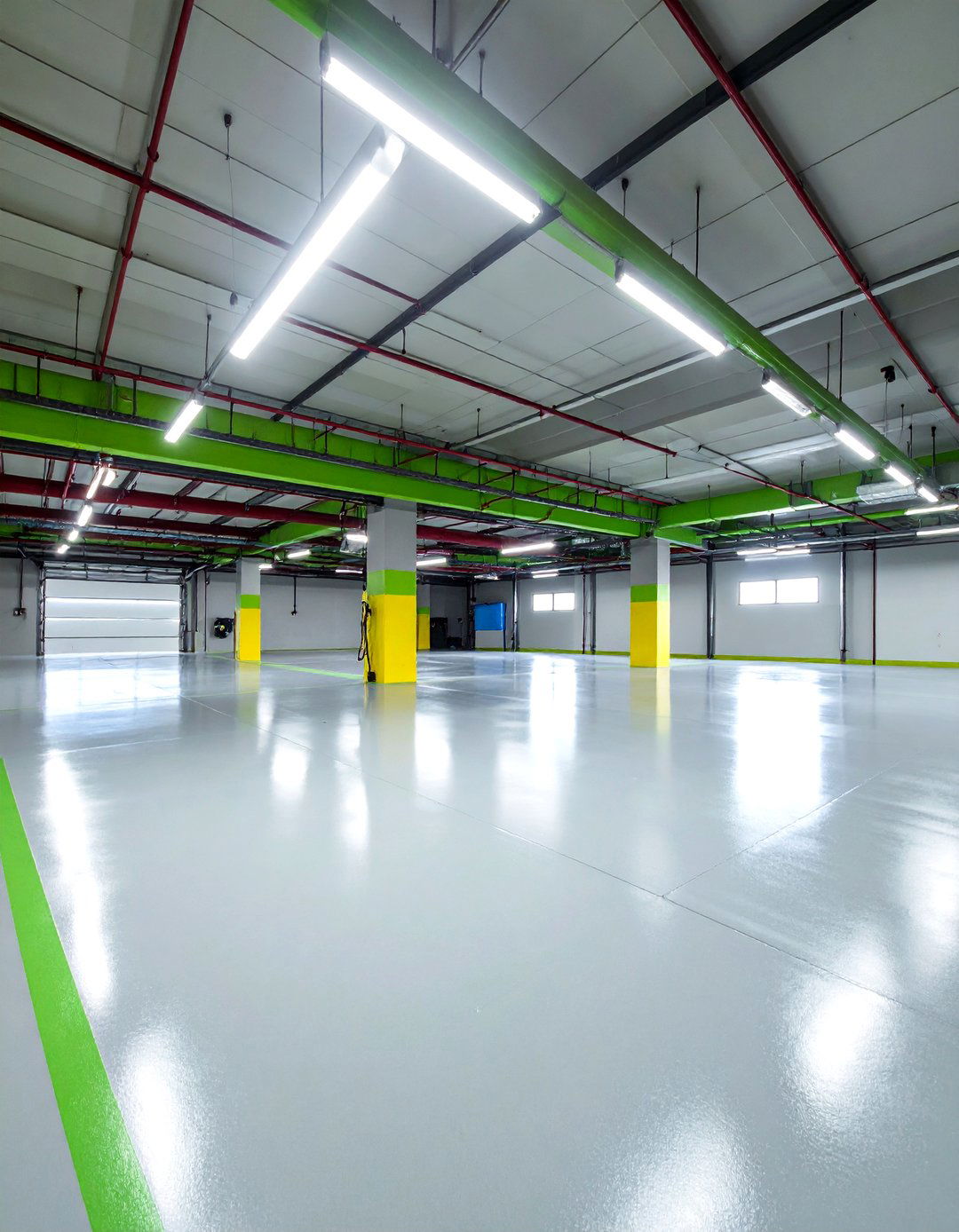
If a full coating is overkill, a silicate or siliconate sealer soaks into the slab and chemically reacts to form a water-blocking barrier inside the pores, helping prevent freeze-thaw spalling and road-salt pitting. The treatment leaves no film, so traction matches raw concrete while dusting drops dramatically. Apply with a pump sprayer on a dry surface; excess is simply broomed away. Although the invisible finish doesn’t hide existing stains, it preps the floor for future coatings by stabilizing the surface.
12. Stone-Composite SPC Tiles for Near-Indestructible Garage Flooring

Stone-polymer-composite (SPC) tiles marry limestone dust and vinyl into a rigid core that resists dents from jack stands and stays stable across temperature swings. Click-edge planks float over minimal subfloor prep, making them friendly for weekend installers. Textured finishes mimic hardwood or slate closely, fooling visitors into thinking you upgraded the house, not just the garage. Because the tiles are waterproof, spills wipe away, and radiant heat works fine underneath thanks to the dense core’s thermal conductivity.
13. Diamond-Plate Metal Panels for Industrial Flair

Aluminum or steel diamond-plate panels bolt or glue directly over concrete, giving garage flooring a rugged, motorsport vibe along with extreme compression strength. Sheets come in 4 × 8-foot sizes you can cut with a circular saw fitted with a metal blade. The raised pattern enhances traction, but edges need aluminum threshold strips to avoid sharp transitions. Because panels expand and contract, allow small perimeter gaps and use countersunk screws in oversized holes. Occasional degreaser and a microfiber mop restore shine in minutes.
14. Polished Concrete with Radiant Heat for Year-Round Comfort
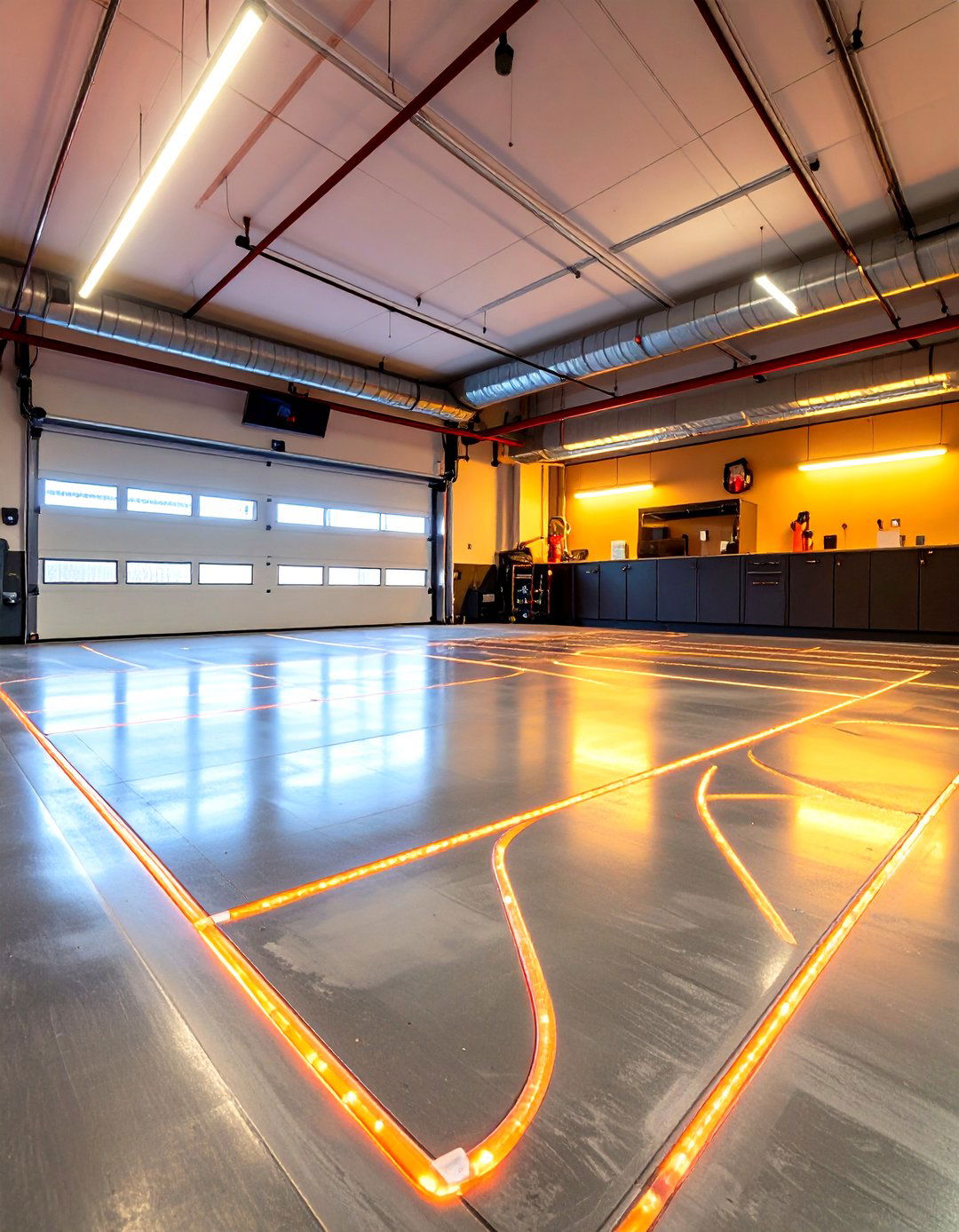
Pairing polished garage flooring with hydronic or electric radiant loops keeps the slab a cozy 22 °C in winter, turning wrenching into a T-shirt activity even in cold climates. The polished surface maximizes heat transfer upward while remaining dust-free. Choose insulation beneath the slab to direct warmth into the room, and program a smart thermostat to pre-heat before you roll in at night. Although initial installation is significant, operating costs stay low because concrete serves as a giant thermal battery.
15. Recycled Tire Rubber Tiles for Eco-Friendly Resilience
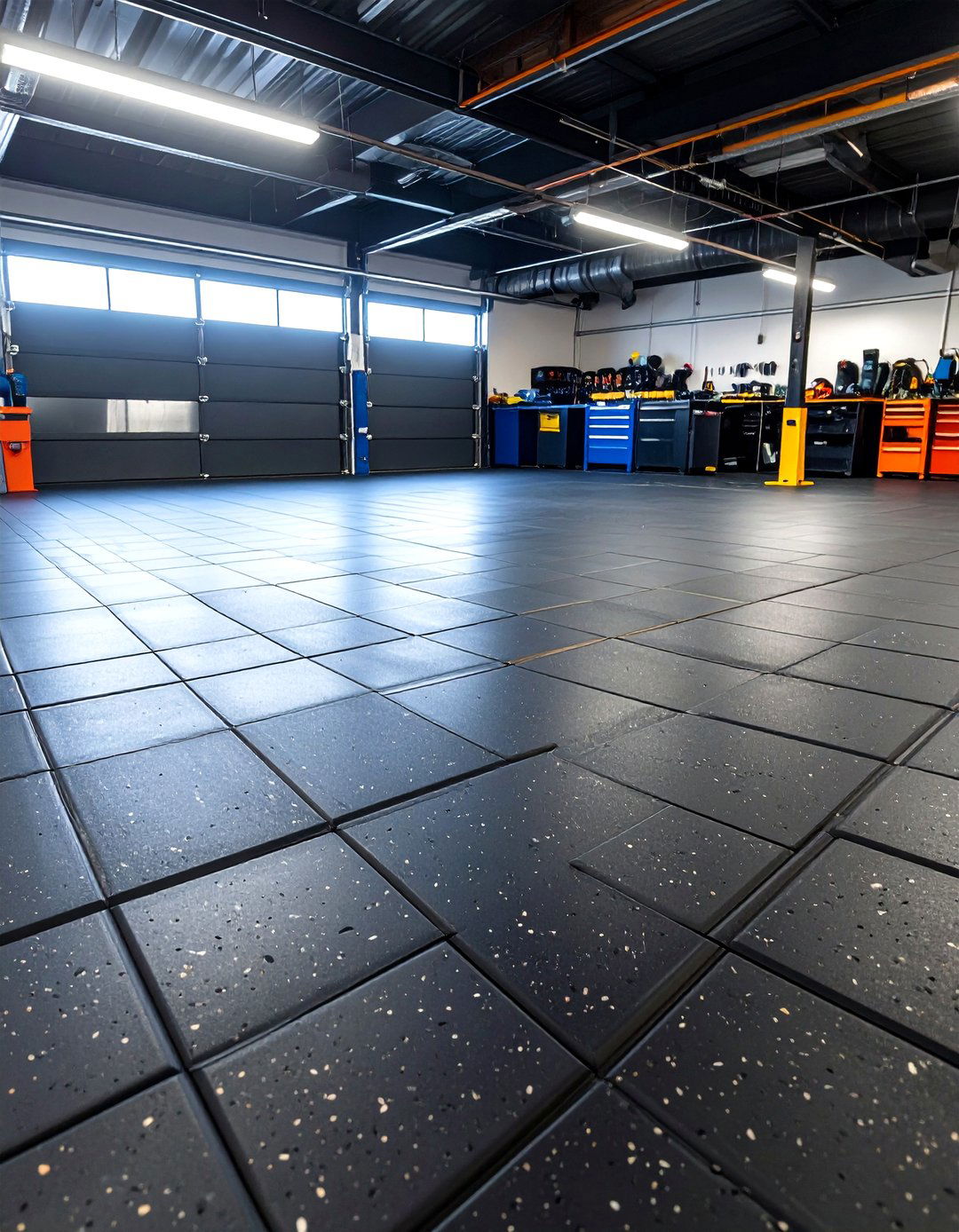
Tiles molded from shredded truck and aircraft tires divert waste from landfills and deliver a cushy, slip-resistant garage flooring surface that dampens impact noise. UV-stable additives fight fading, and the dense rubber shrugs off free weights and jack stands alike. Installation is a kid-puzzle affair: interlock tabs, then trim edges. The tiles’ speckled color hides dust, and cleanup takes a broom and mild cleaner. Off-gassing smells fade within days, leaving you with a sustainable floor that feels great under a mechanic’s creeper.
16. Latex or Acrylic Garage Floor Paint for Budget Refresh
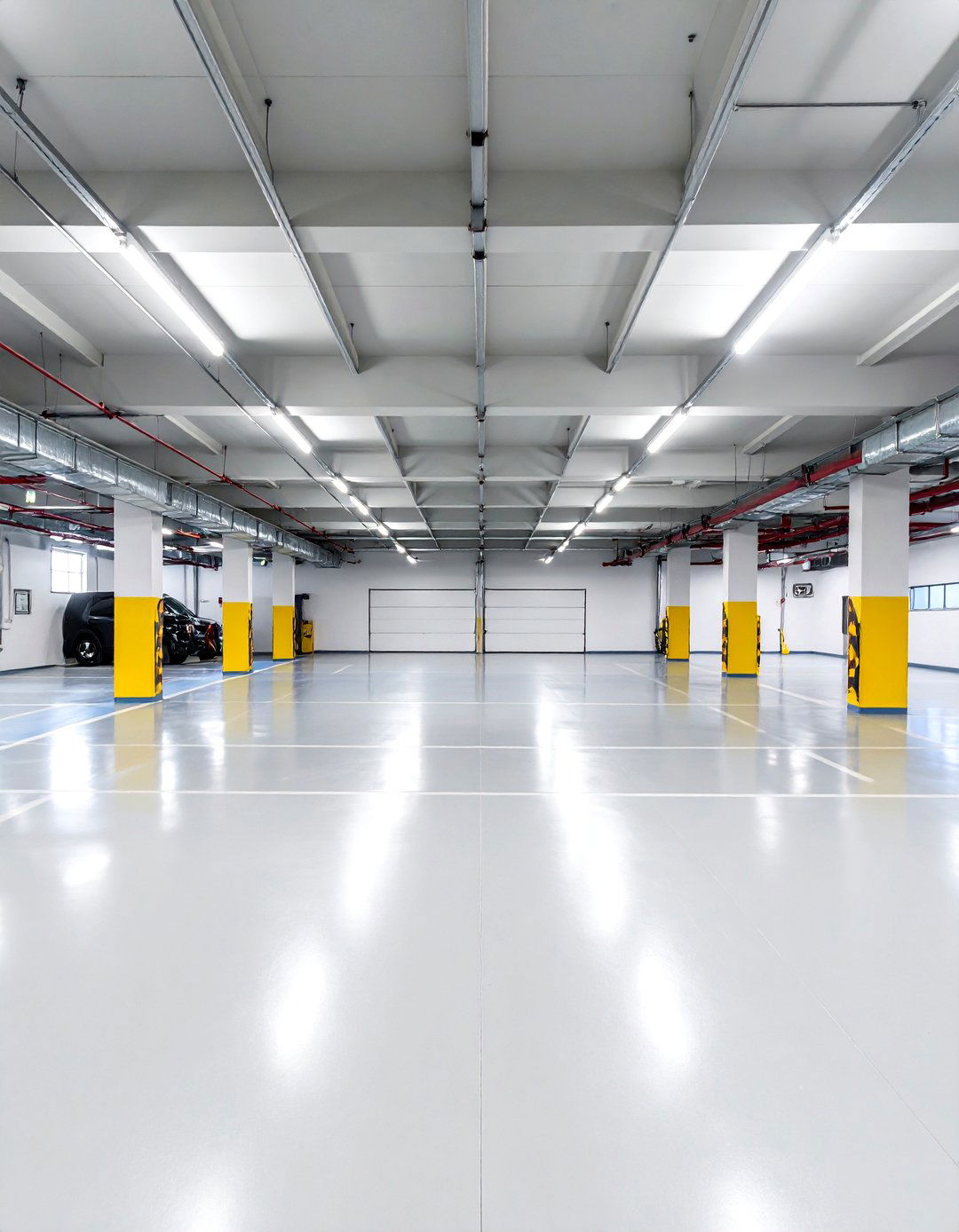
When you need a quick facelift, latex-based concrete paint roles on with a standard roller, dries in hours, and cleans up with water, letting you reclaim the bay by evening. While not as hard as epoxy, the coating resists everyday dirt and is inexpensive to recoat every few years. Add a slip-resistant additive before rolling the final pass. Thorough degreasing and an etched profile ensure adhesion; skip these and peeling follows. Touch-ups blend well, so keeping a labeled quart for future nicks saves time.
17. Self-Leveling Overlays for Mirror-Flat Garage Flooring

Cement-based self-leveling compounds flow like pancake batter, filling low spots and eliminating birdbaths in as little as four hours, creating a pristine canvas for paint or tile. Apply primer first, then pour and spread with a gauge rake. Overlays can go as thin as 6 mm or several centimeters thick if reinforced with aggregate. Although not designed as a final wear surface in most garages, high-strength formulations can serve solo when sealed, delivering a smooth, modern aesthetic without visible joints.
18. Integrated Trench Drains for Watertight Garage Flooring

Installing a pre-sloped trench drain along the door or between bays lets melting snow and wash water exit fast, preventing slippery puddles and protecting cabinets. Channels come in lightweight polymer concrete or PVC, topped with cast-iron or stainless grates rated for vehicle loads. Set the drain flush with the finished garage flooring height and connect it to stormwater piping or a dry well. Combine with a mild floor slope of 1 cm per meter for effortless drainage every season.
19. Open-Profile Modular Tiles for Built-In Ventilation
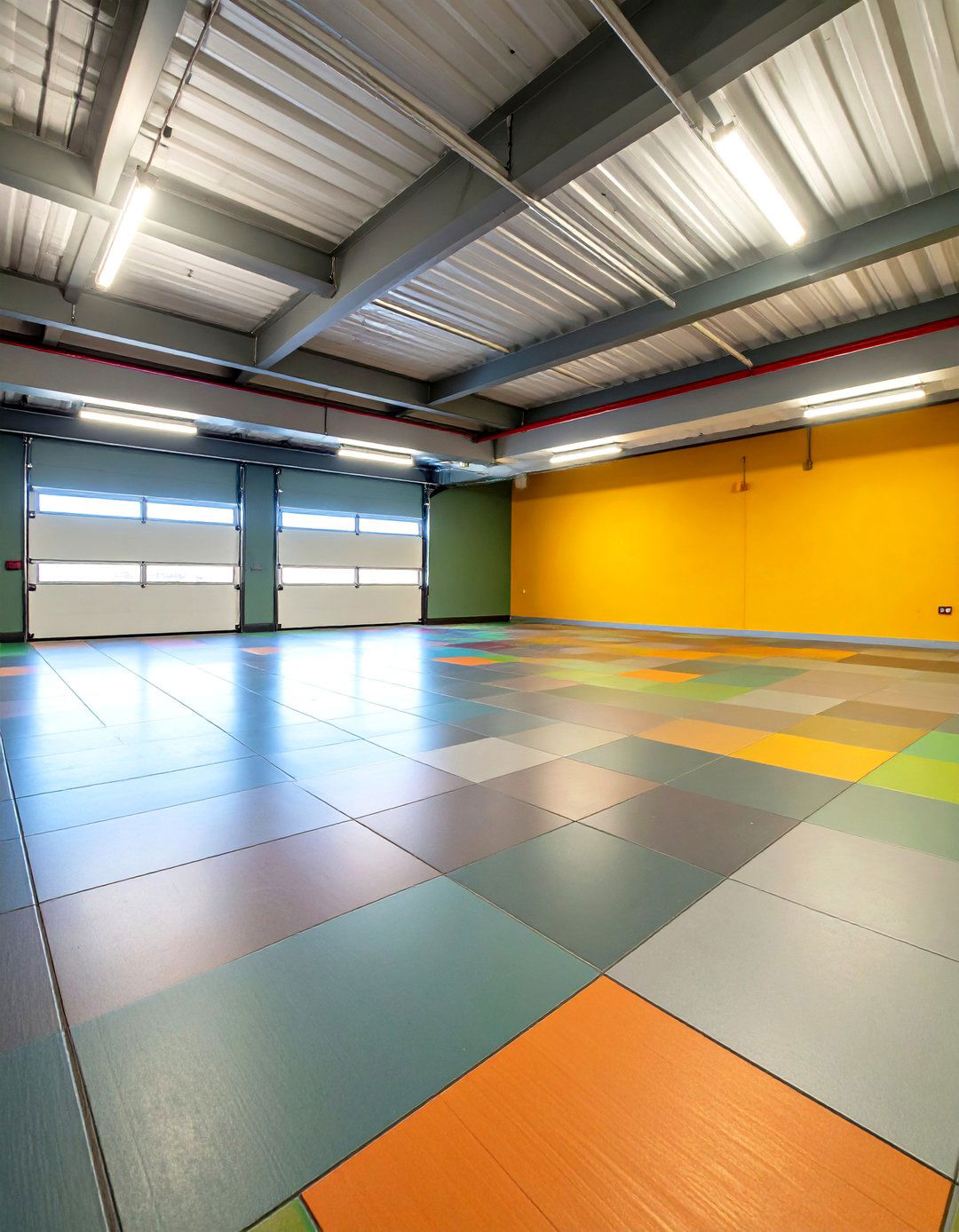
Vented polypropylene tiles use a ribbed top and channeled underside to move water and air, keeping the concrete dry and slip hazards low. Each 30 cm square snaps into the next, and you can mix solid tiles in traffic lanes with vented ones near garage sinks or detailing bays. The raised grid yields anti-fatigue cushioning and supports loads exceeding 35 000 kg, yet replacement requires only a flat screwdriver. Seasonal hose-downs clear debris, making maintenance trivial.
20. Decorative Chip and Metallic Epoxy Garage Flooring for Custom Art
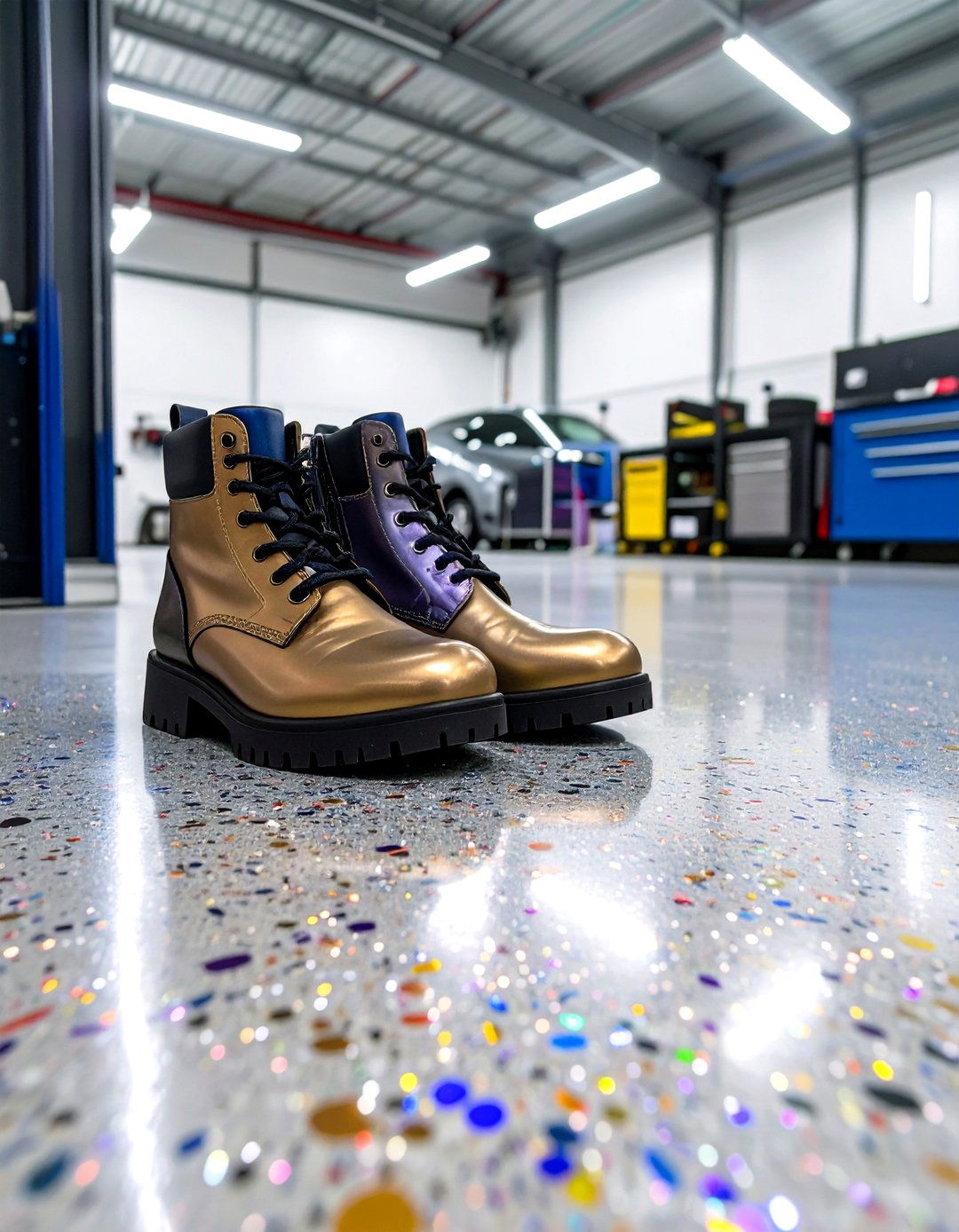
Full-flake epoxy systems broadcast multicolored vinyl chips into wet resin, then seal them with clear coat to create terrazzo-like depth that hides scuffs and debris. Metallic epoxies swirl glitter or pearlescent pigments through clear resin, producing marbled patterns unique to every pour and turning garage flooring into functional art. Both finishes share epoxy’s chemical resistance but add dramatic style. Practice on a plywood panel first to perfect your technique, and always wear spiked shoes to walk the wet floor without leaving prints.
Conclusion:
Transforming a basic slab into high-performance garage flooring can be as simple as rolling on paint or as bold as installing metallic epoxy, porcelain, or radiant-heated polished concrete. Whether you prioritize rapid installation, eco credentials, industrial toughness, or showroom aesthetics, the ideas above show a proven path. Match durability to your hobby, weigh prep against payoff, and you’ll gain a cleaner, quieter, and more inviting workspace that lifts daily routines while protecting your home’s value.


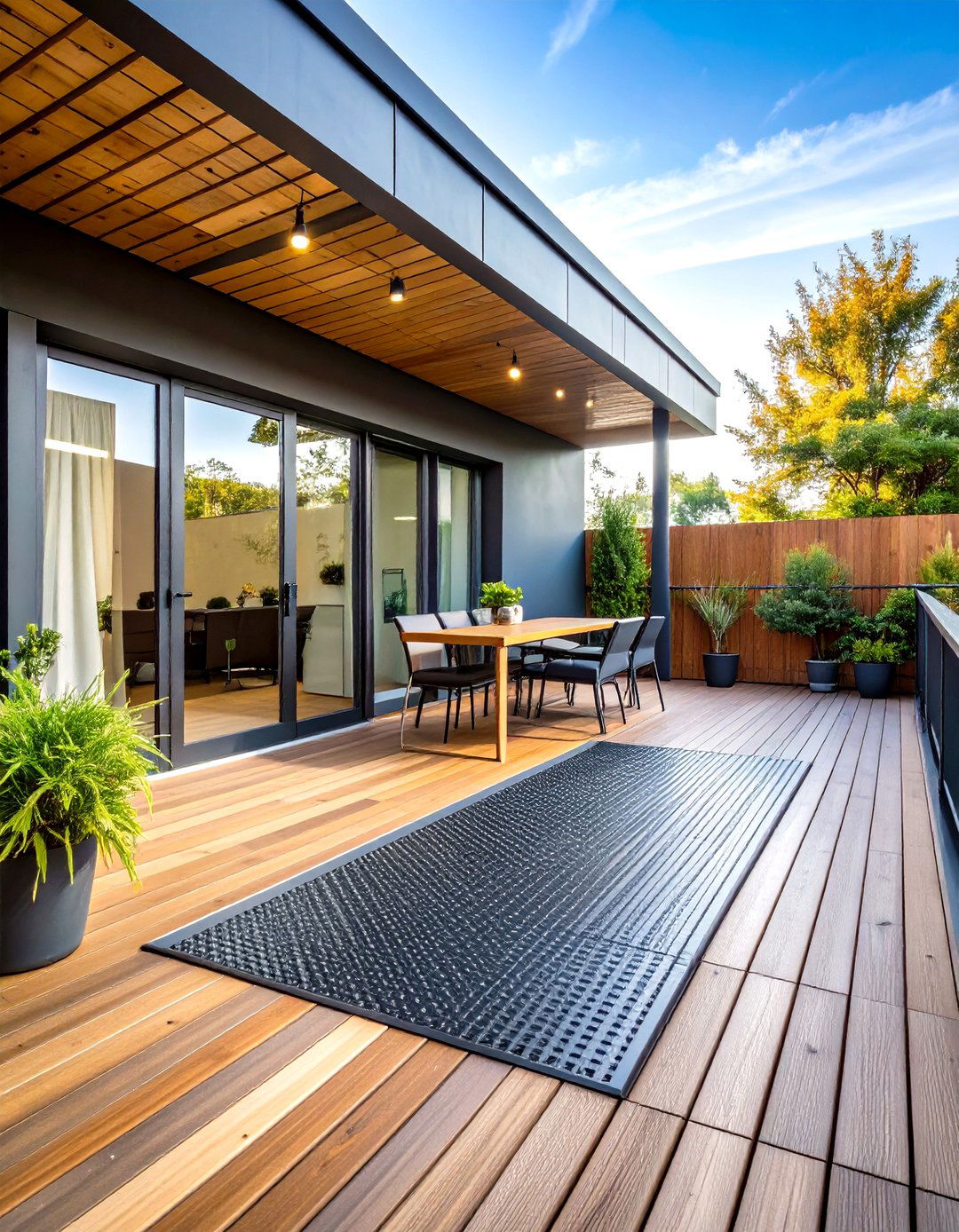

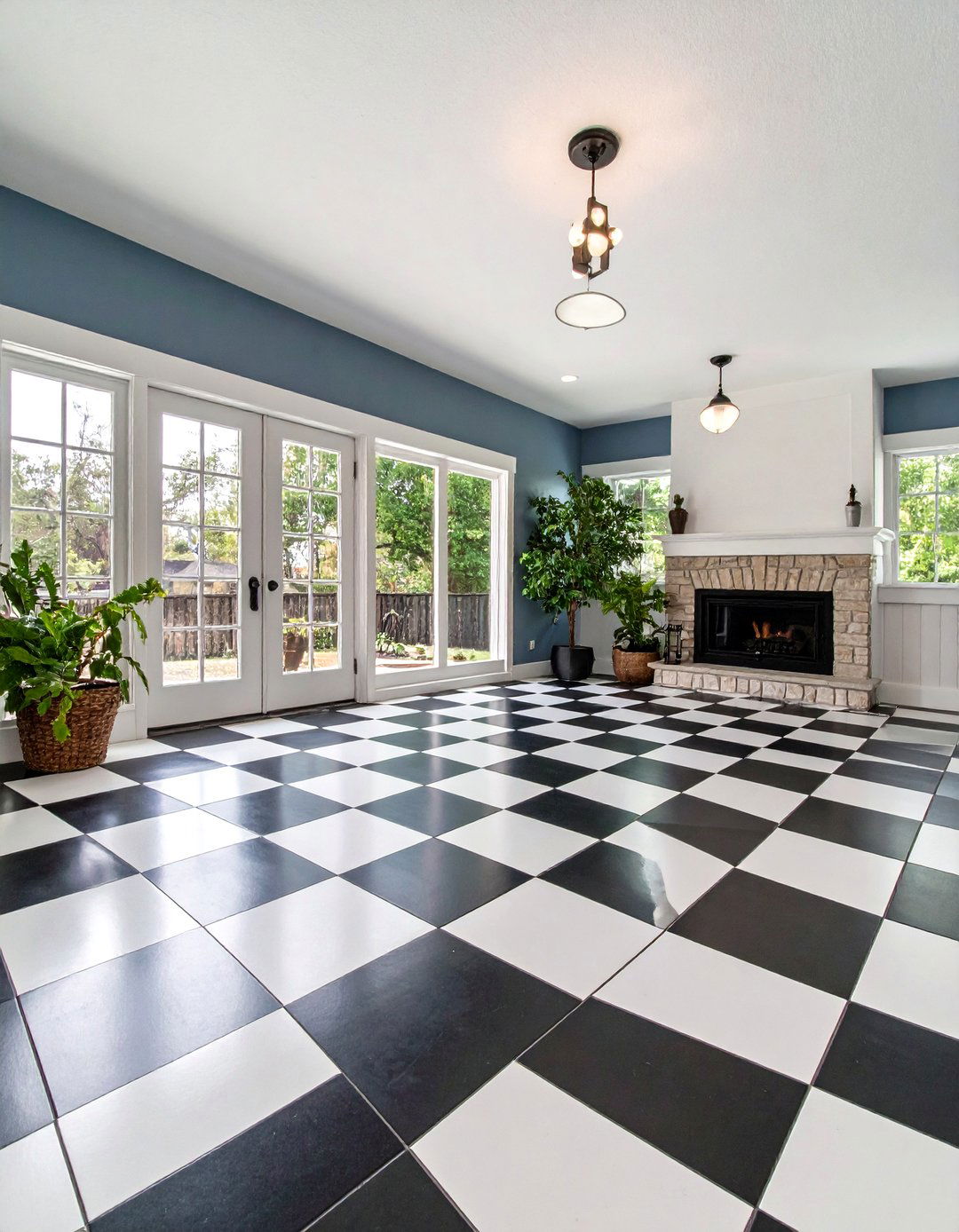
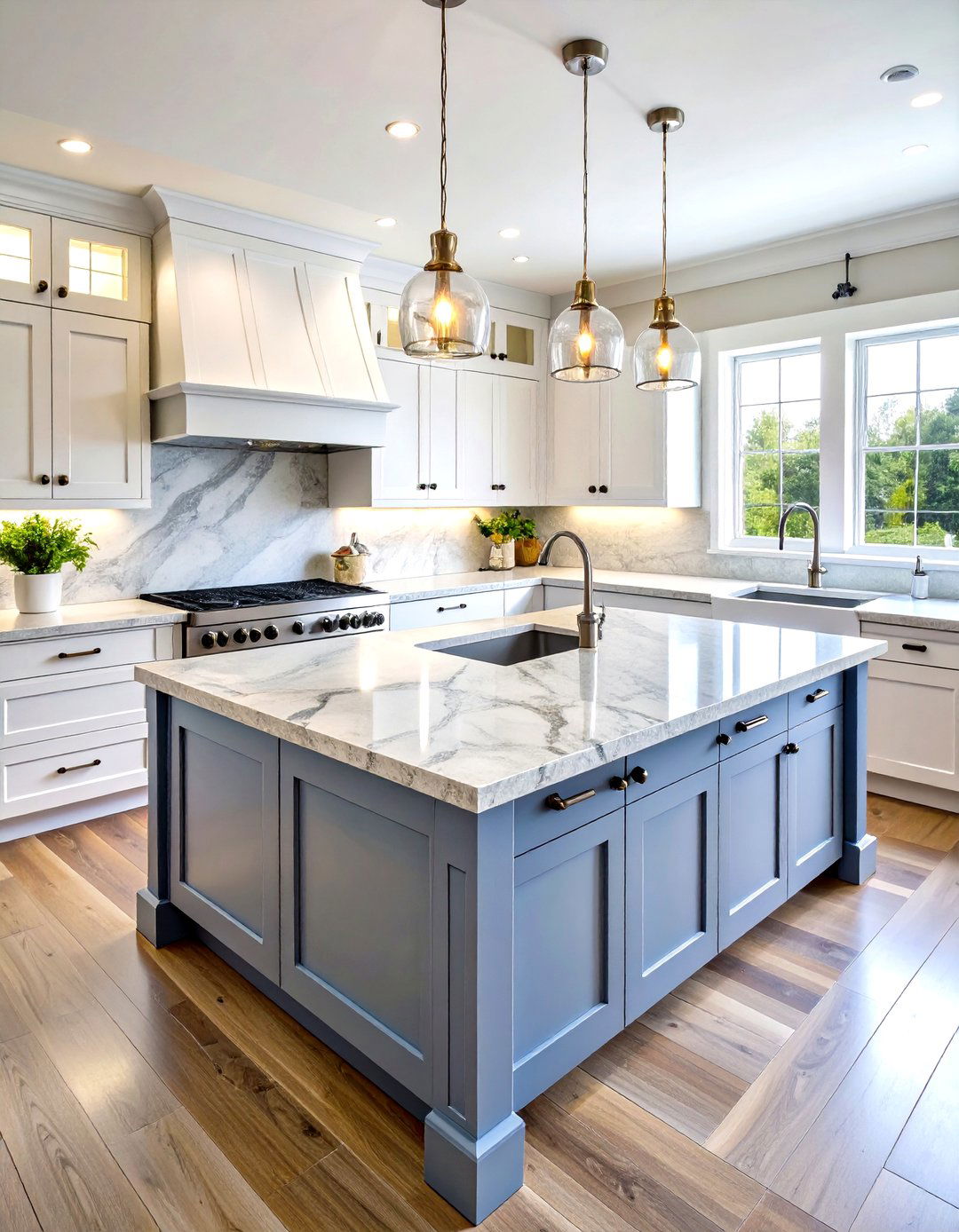
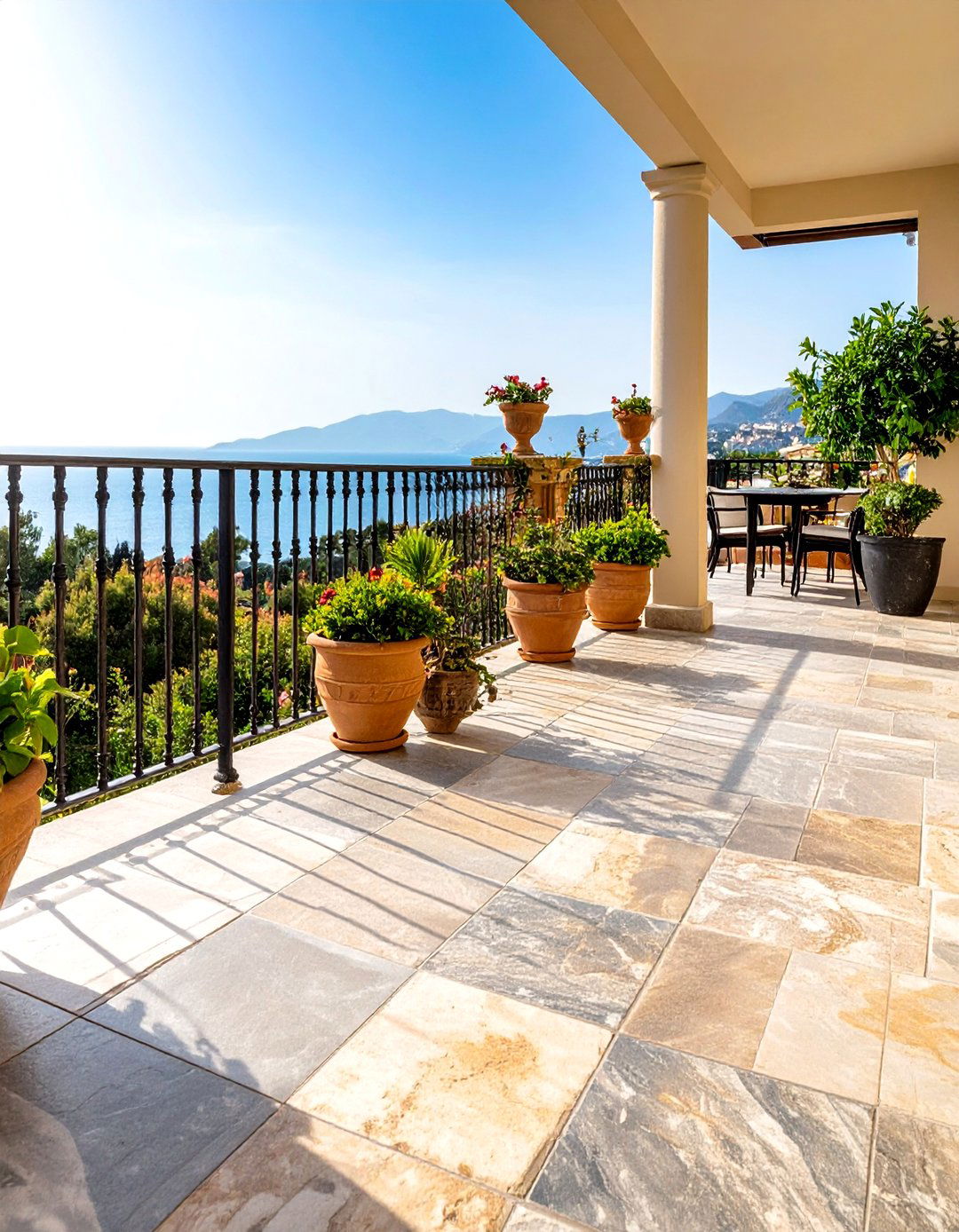
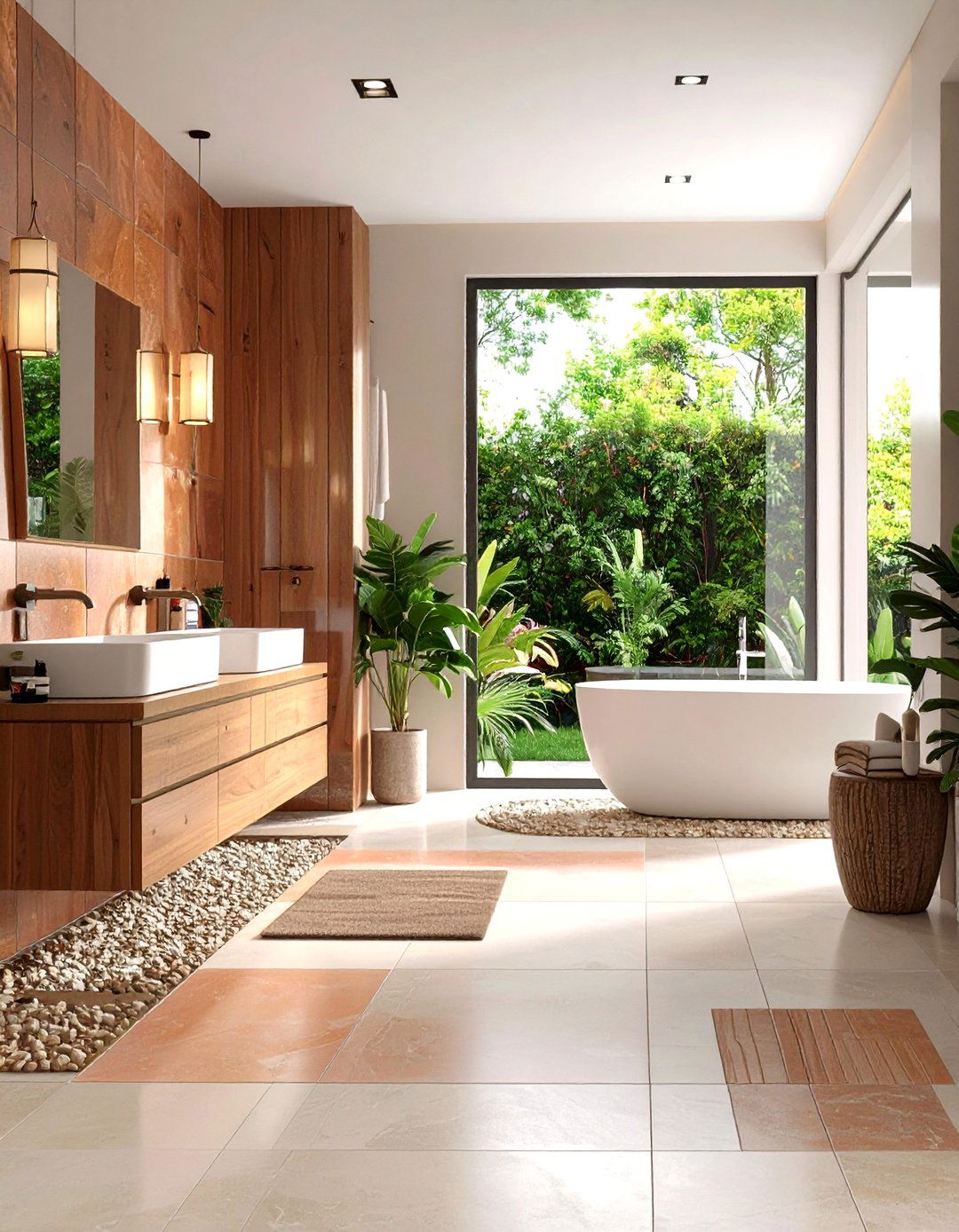

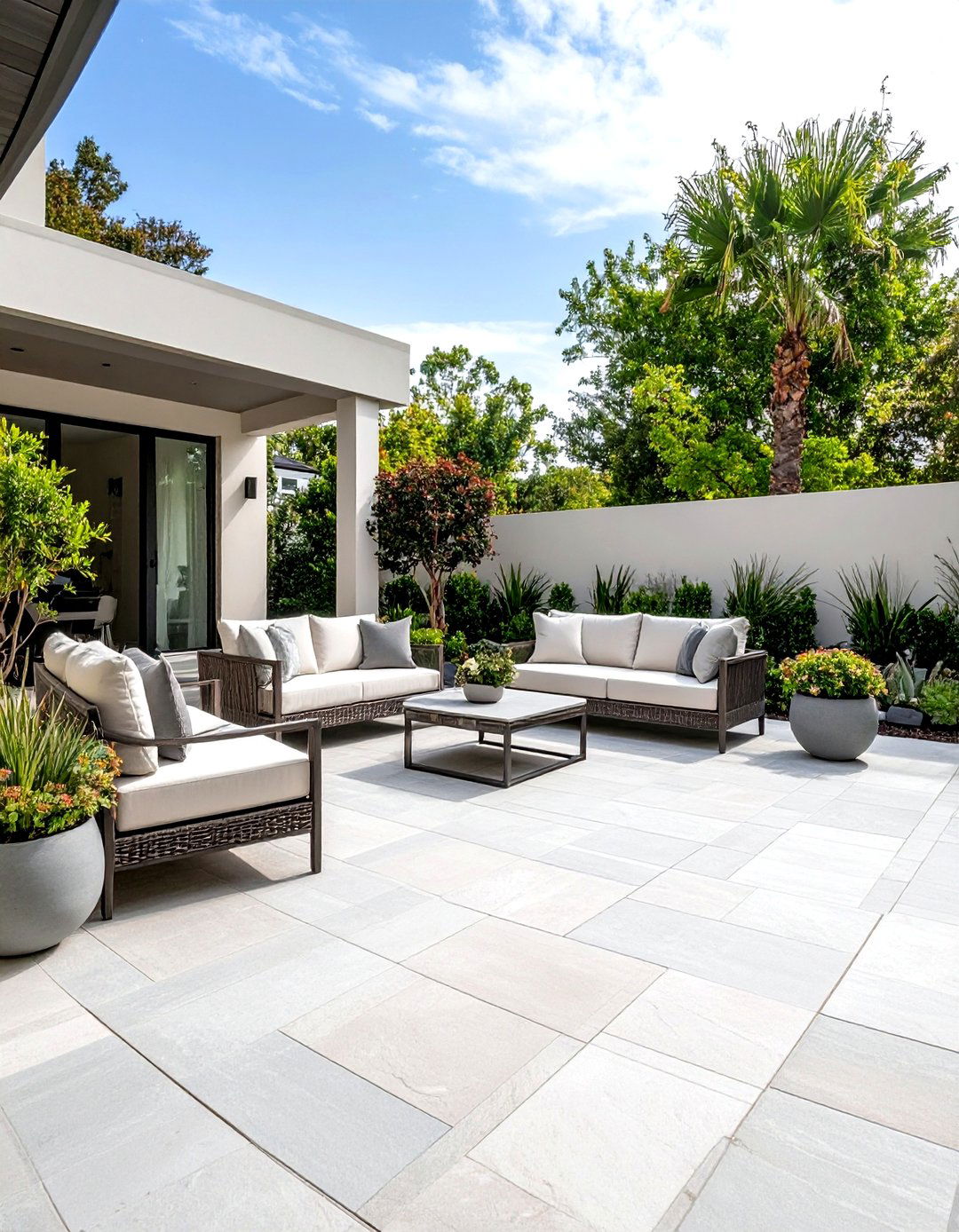

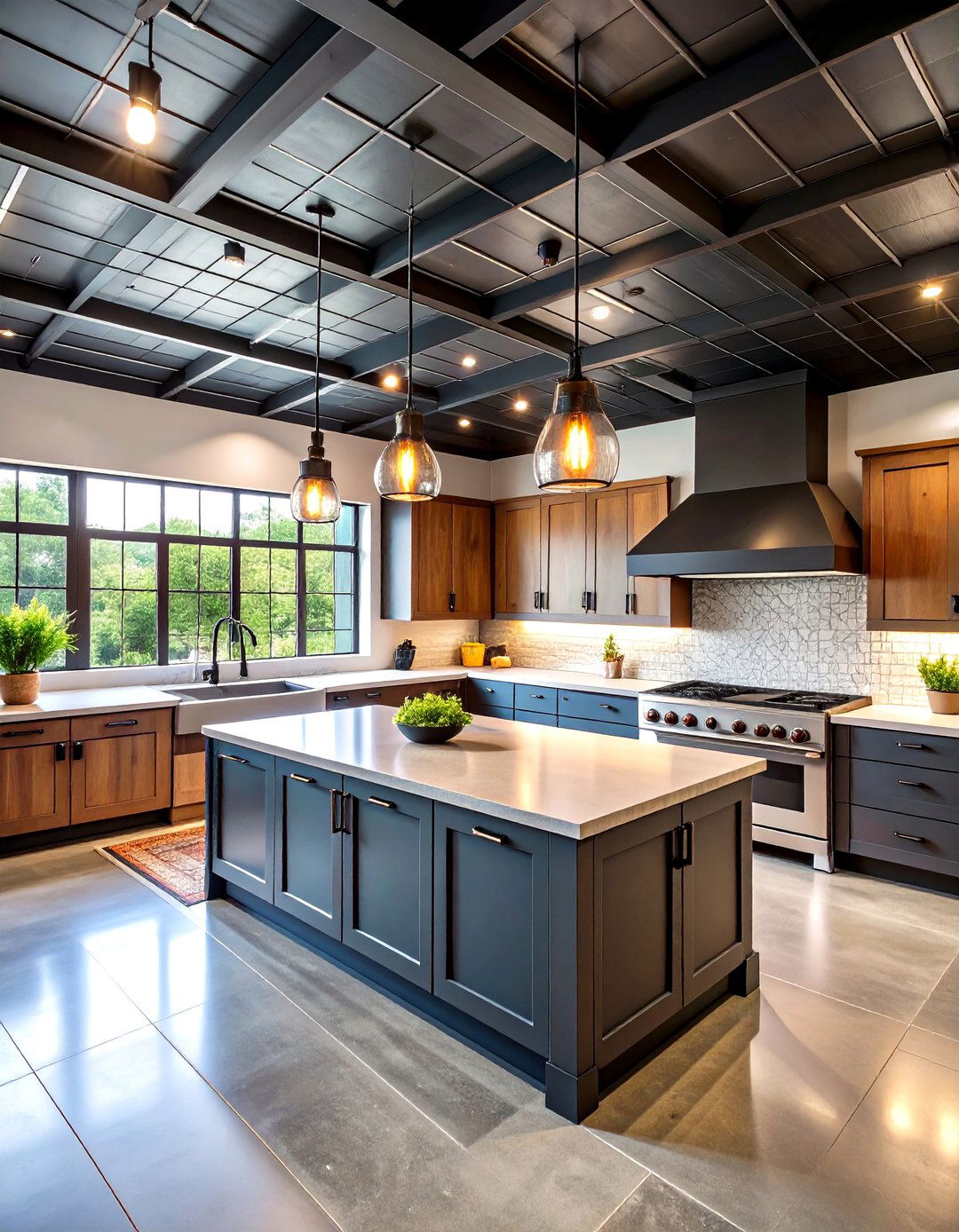
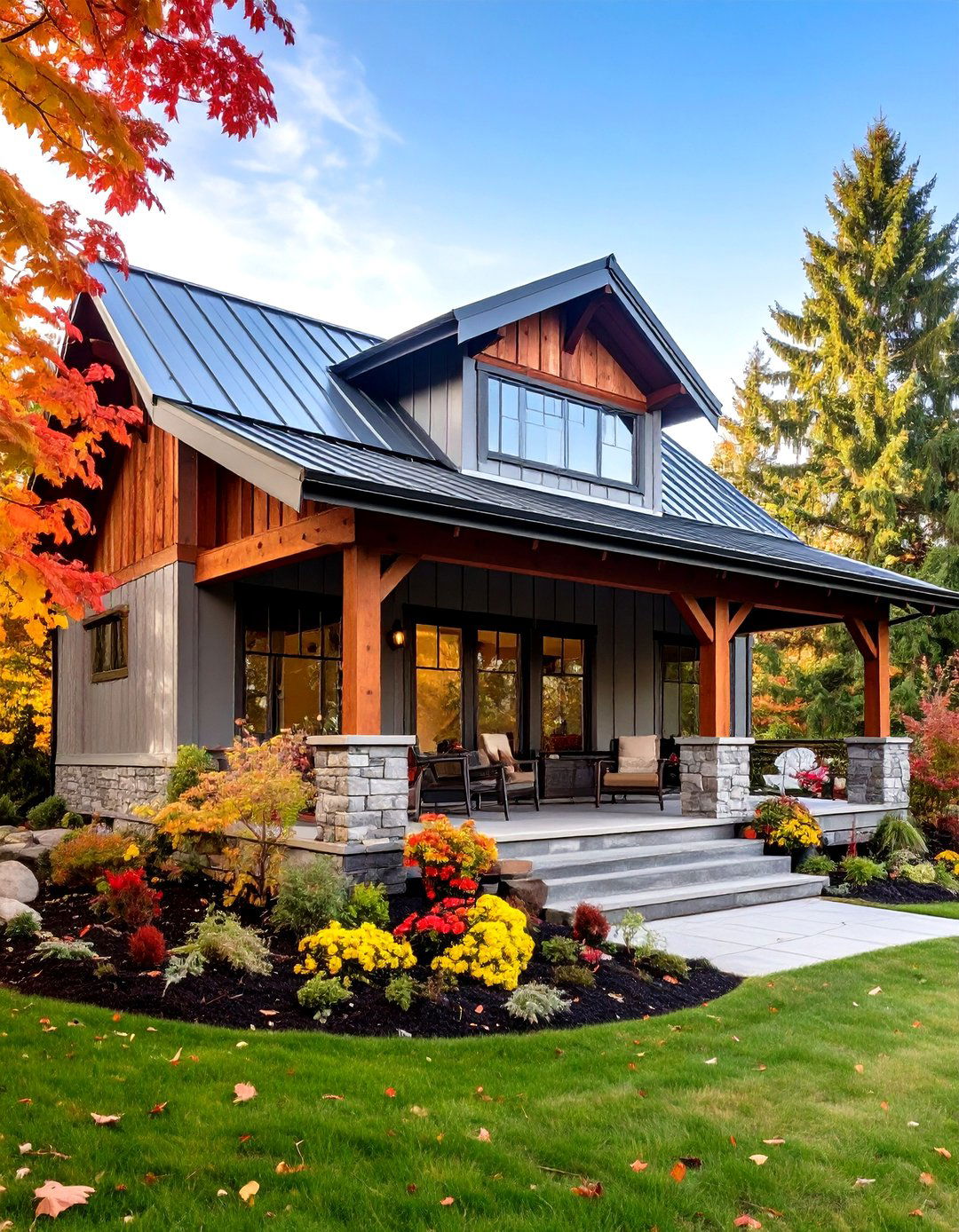

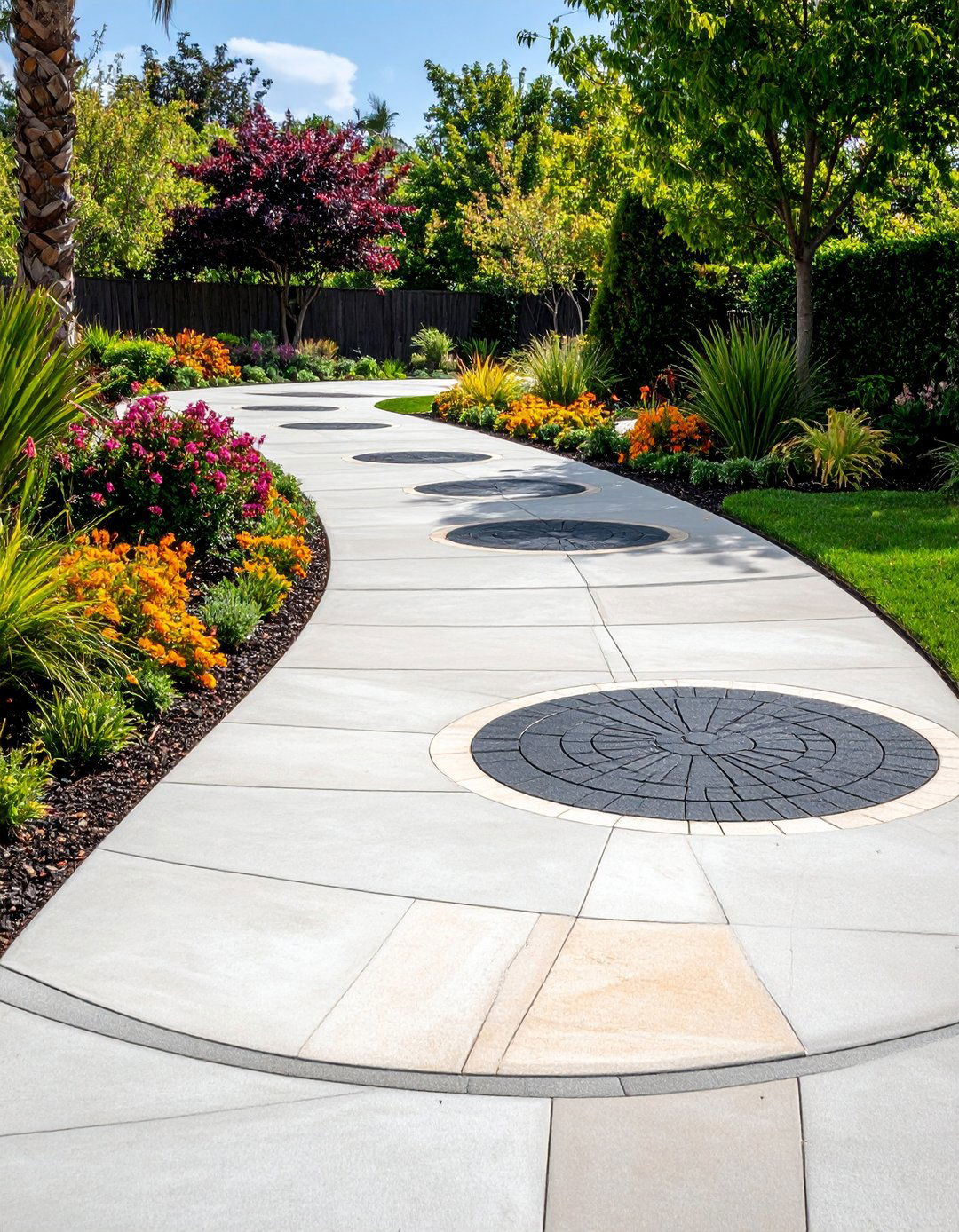
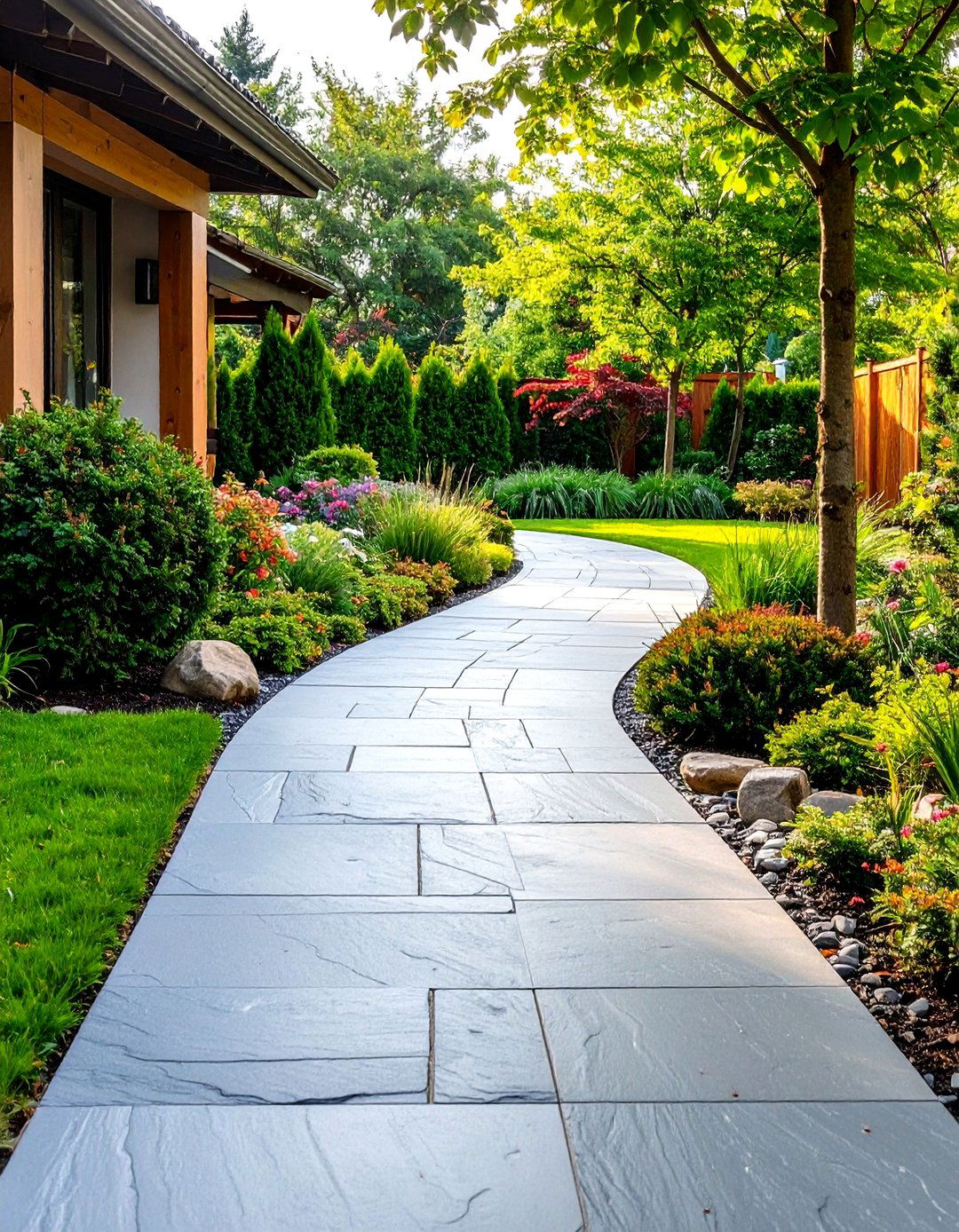

Leave a Reply